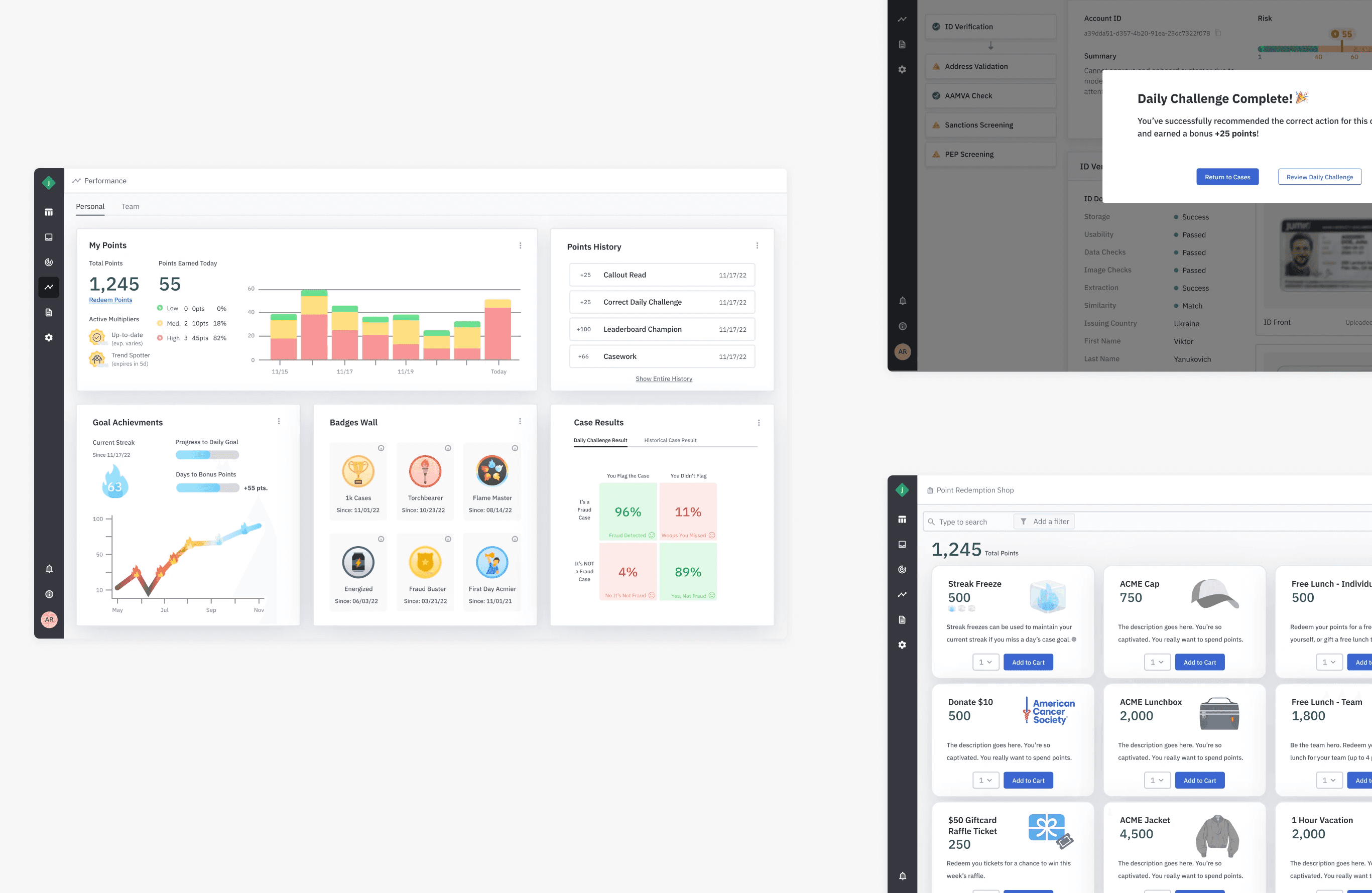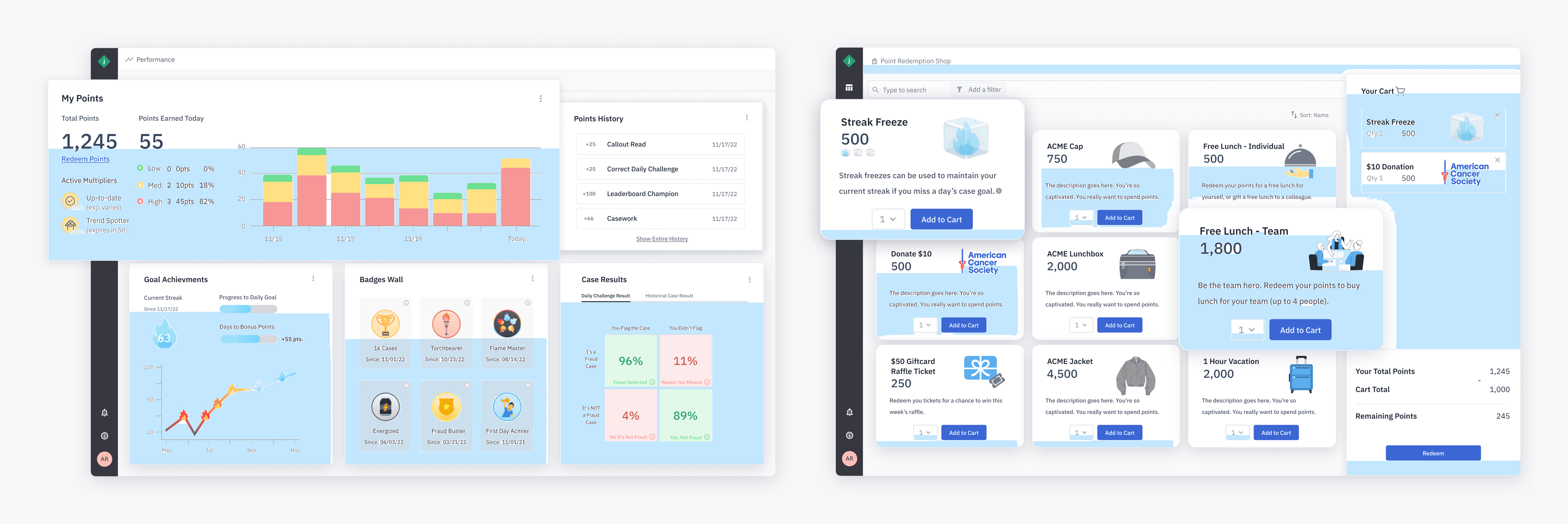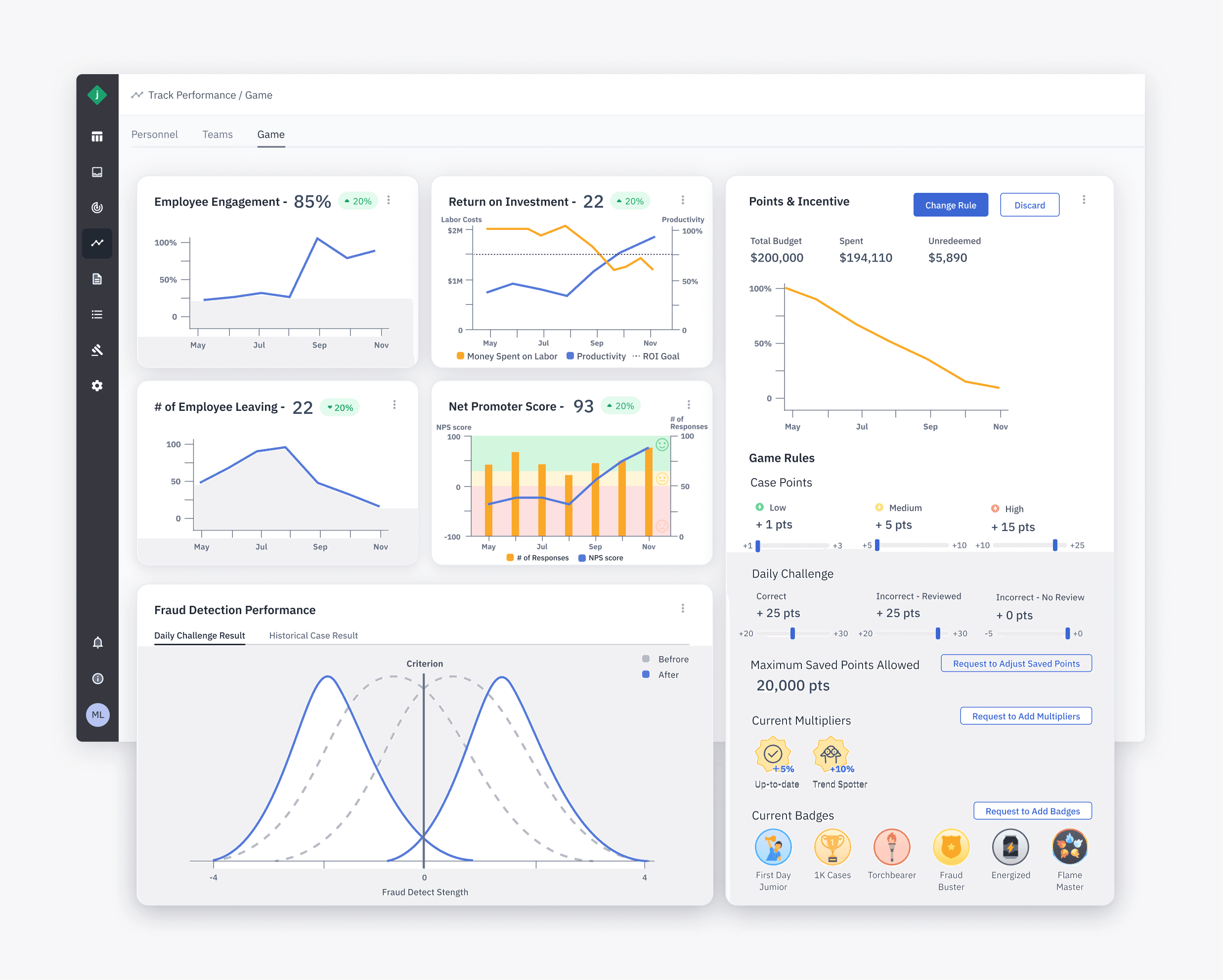Retaining Fraud Detection Employee with Gamification Design
ACME Fraud Detection

Team
2 UX Designers
Role
UX Design
User Research
Gamification Design
Tools
Figma
FigJam
Timeline
6 Weeks, Fall 2022
Background
Who is ACME Fraud Detection Company?
"ACME" is an online identity proofing and risk assessment platform trusted by leading organizations like HSBC and United Airlines. They provide ID verification services to protect against fraud and identify money laundering.
What was the problem?
Recently, the company has experienced a significant increase in employee resignations, which results in 5x the regular workload for the remaining workers. Therefore, they aim to retain their current workforce and minimize the cost and time of training new employees.
Research Insights
Workers feel a lack of motivation and growth opportunities in their repetitive work routine…
We conducted a user interviews with 5 current employees to learn more about their work routine and challenges they faced.
Here are some of the findings:
Repetitive work: Workers has a repetitive work routines and feel little autonomy control over their work.
Low self-achievement: Worker's main goal is to flagged suspicious cases, however, flagged cases normally went through a long investigation, therefore, caseworkers have little clue about their are doing a good job or not.
Different Motivations: Workers' have different opinions on what can best motivates them to work harder, it varies based on their career goals.
Design Goal
Gamify the dashboard to retain caseworkers and keep them motivated.
To motivates worker's from repetitive work, we decided to implement gamification design to current dashboard to visualized the impact of their work. To keep track of the game details, we also designed a game control panel to manager's dashboard to track the game outcome.
Concept Ideation
Building up from the research insights, we turned the insights into personas to summarized user pain points and goals. Then, we proceed to ideate and discover areas to implement the game.
Ideation 1: Where to implement the game?
Introduce game elements on targeted areas to complement identity verification.
We employed Objects and Actions Analysis to identify vital transactional actions and objects within the existing dashboard, highlighting areas that drives motivation without compromising professional work.
Ideation 2: How was the game designed?
Targeted workers' motivations and incorporated with game mechanics to foster self accomplishment.
We start designing games by optimizing the combination of motivators and game mechanics that could encompass most workers motivation.
Take Signal Detection Challenge for example, we realized that workers have little self accomplishment because they have little idea of how they perform, hence we utilized company previous cases (that already has an answer) to provide instant feedback after they submit the case.
This approach targeted worker's motivations of getting mastery and provide them with instant feedback to foster a sense of mastery.
Deliverables
We designed five different games in the span of six weeks, each gamification design not only followed the company's design system, but also incorporated new components to further leverage game designs.
Dashboard: Caseworker
Foster worker motivation through a point-based game and redemption system.
Caseworkers are experts at flagging fraud cases, so we incentivized flagging fraud cases. By earning points, caseworkers can redeem their points for virtual and physical capital, giving them the autonomy to spend what they’ve made.
Train signal detection ability with a daily challenge game.
Company accumulates a database of known cases (fraud, not fraud) over time. We utilized those to enhance workers' signal detection ability. The game element is revealed only after completing identity verification this could avoid distraction during the process.
Dashboard: Manager
Track Game Outcome — Ensuring a balance between business goal and employee retention by monitoring game outcomes.
We designed a game control panel for manager to keep track of the outcome of the game, incentives and game rules could be adjusted with a 1-week notice based on performance of the employees and company's cost.
Outcome and Takeaway
The project received a perfect mark of 100/100
" Wow! This is a remarkable UX project that frankly is at a professional level well beyond a 6-week class project. " – Professor Daniel Rosenberg
Collaboration is the key to success!
From this project, I've learned about balancing meeting users' needs and business goals. Implementing a gamification systems in this case, lowers the cost of recruiting and onboarding new employees and gives caseworkers a sense of autonomy.
I collaborated with my teammate to bring this design, instead of divided in half and do it separately, we went through series of meeting and work session together to constantly making sure that we are on the same page. The result of this enterprise sponsored project was great, as we got full points 100/100 for our work.




